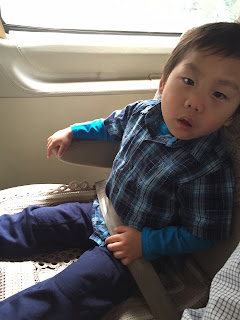shared post from rainbow kids.com
Written by Melissa Rush on 01 Feb 2017
Adopting a child is both an exciting and at times overwhelming journey. However, miscommunication and asking the wrong questions can make this life changing decision even more stressful than it needs to be! We’re busting the top 5 myths about adoption to help make the process a little easier.
1. The children shown in photo listing are the only children that an agency places.
This is one of the top mistakes that families make when deciding to begin their adoption journey. Often, families feel discouraged because the children they see on these pages do not feel like a good fit for their family. The reality is, most children on waiting kids sites are there because when they became eligible for adoption, the agency did not yet have a family identified to match them with. These children are a very small percentage of the children that an agency places—many children with minor special needs never even appear in photo listings. Most of the children adoption agencies place are not considered waiting children. Many younger children, or children who have what is considered a minor special need, are often matched with families already in the adoption process. The main goal for any agency is that children are united with their family as quickly as possible and reduce the time a child is in an institution.
2. The more partnerships an agency has, the better.
In this case, the old adage of quality over quantity is true. While it may initially seem as though an agency with a larger number of orphanage partnerships will provide families with more opportunities to be matched with a child, this is rarely the case. Instead, pay attention to the quality of an adoption agency’s partnerships. Ask how often they visit the children in these homes, if they have up-to-date photos or videos, and what their relationship with orphanage staff is like. Often times, agencies with fewer partnerships will have a closer relationship with the home, will be able to gather more information on your adoptive child, and in some cases, will have personally met your adoptive child multiple times.
In addition, close partnerships also allow for training of caregivers, developmental toys, medical evaluations and the elevation of the overall care these children receive. Additionally, close relationship with the directors allows for medical updates, updated photos and videos, and additional tests for children who are being placed with families.
3. If many families are enrolled in an adoption program, it must be fast moving.
The number of families enrolled in a program can impact wait time. Always ask an agency what the most recent timelines in a particular country program have been. While these can often change due to unforeseen factors, they are the best estimate of what your family’s wait time will be. As always, your family’s openness to special needs, older children, and sibling groups can greatly expedite the adoption process.
Smaller program sizes allow for close, personal relationships with each team member and for agencies to get to better know their families and to make better matches. Case workers quickly become your advocate and “family”.
4. Adoption support isn't necessary. I'd rather handle everything myself.
While a can-do attitude is essential to becoming an adoptive parent, there’s no substitute for an agency and caseworker that are experienced and truly understand what you’re going through. Your adoption isn’t over once your child is home; it’s a lifelong journey with it’s own set of joys and challenges. Working with an agency that will support you through the ups and downs of the waiting process, in-country travel and the questioning teenage years on the horizon is not just helpful; it’s essential. Long past the “gotcha day”, your adoption agency can put you in touch with counselors, educational tools, and other families that have adopted from your child’s birth country to help make your child’s transition home smoother and happier.
5. There aren’t really any grants or financial resources available to adoptive families.
Agencies are committed to minimizing fees whenever possible. AGCI also works to be truly transparent about fees and structures all fees to be flexible so that families are able to pay over time.
Additionally, there are so many adoption grants and financing options that can help make adoption possible for your family. In the last two years alone, $760,608 in adoption grants were awarded to AGCI families. The Special Treasures Fund, Brittany’s Hope Grant, and the Moriah Fund are all adoption grants available to help families with adoption costs. There are also dozens of other organizations that provide adoption grants and aid to adopting families, as well as tax credits and military subsidies.













































